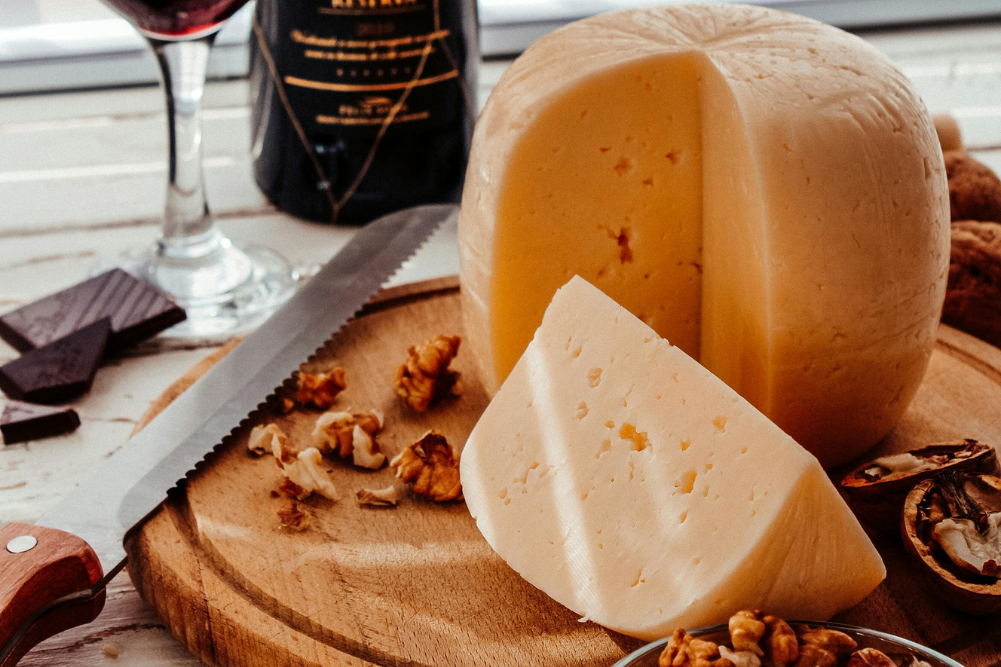The healing power of red yeast rice
Red yeast rice, or red fermented rice, is a fermented product of rice on which a species of red yeast called Monascus purpureus has been grown. It has been used for centuries in China as both a food and medicinal product. The first documented use of red yeast rice was as early as 800 A.D. in the Tang Dynasty where it was proposed to be an aid for gastric problems such as indigestion and diarrhea, as well as for blood circulation and spleen and stomach health. In Asian countries, red yeast rice is a dietary staple and is used to make rice wine, as a flavouring agent and to preserve the flavour and colour of fish and meat. Red yeast rice is currently used in Chinese medicine to lower cholesterol, promote blood circulation and aid digestive problems.
Red yeast rice contains nine naturally occurring compounds which are collectively known as monacolins, all of which reduce cholesterol levels in the body by inhibiting cholesterol synthesis. One of these compounds, monacolin K, is a potent inhibitor of HMG-CoA reductase, the enzyme which helps make cholesterol. The prescription drug lovastatin sold in the United States is identical to monacolin K. Statin medications are prescribed to lower ‘bad’ LDL cholesterol levels and help reduce the risk of heart disease.
It is due to the presence of monacolin K in red yeast rice products that the US Food and Drug Administration considered them to be drugs rather than supplements and has recently required the manufacturers remove any red yeast rice products that contained monacolin from the US market.
Red yeast rice contains starch, protein, and trace elements such as magnesium and sodium. It also contains sterols such as beta-sitosterol and campesterol that help to block cholesterol absorption in the intestines. Isoflavones, monounsaturated fatty acids such as oleic, linoleic and linoleic acids and B vitamins such as niacin are also present.
Cholesterol lowering
Red yeast rice has been shown in many studies to significantly reduce high cholesterol. One of these studies, undertaken by the UCLA School of Medicine involved 83 people with high cholesterol levels. They received either a red yeast rice supplement or a placebo over a twelve week period. Those who took the red yeast rice extract experienced significantly lower levels of total cholesterol and ‘bad’ LDL cholesterol as well as triglycerides (fats in the blood) compared to those taking placebo.
In another eight week study of 446 people with high cholesterol, those receiving red yeast rice also experienced a significant drop in cholesterol levels compared to those who took placebo. Total cholesterol fell by 22.7 per cent, LDL cholesterol by 31 per cent and triglycerides by 34 per cent in the red yeast rice group. The ‘good’ HDL cholesterol increased by 20 per cent in the red yeast rice group.
This research was again confirmed in a June 2012 study which involved 18 patients with high cholesterol who took a red yeast rice and phytosterol product over a period of six weeks. It was reported in the Journal of Dietary Supplements that total cholesterol was reduced by 19 per cent and LDL by 33 per cent. This magnitude of reduction in LDL cholesterol was significantly greater than the 28 per cent reduction which was observed in a 1999 Journal of the American Medical Association meta-analysis on the average effectiveness of statin medications in lowering cholesterol levels.
Bone growth
Red yeast rice has also shown promise in helping with bone growth and therefore could be useful in preventing osteoporosis. A laboratory study undertaken on bone cells was published in 2010 in the journal Nutrition Research. The results of the study showed that red yeast rice extract helps to promote bone growth by stimulating cell proliferation and enhancing the activity of the enzyme alkaline phosphatase in osteoblastic cells, the cells that promote bone growth.
Using red yeast rice
Most studies have used 600mg of red yeast rice extract taken two to four times daily. It is advisable to have your cholesterol and triglyceride levels monitored on a regular basis so that you can adjust the dose as required.
There has been some concern that red yeast rice products may affect liver and kidney function in the same way as lovastatin due to the presence of monacolin K. However, toxicity evaluations of red yeast rice in animals for as long as four months have shown no toxicity. Human trials have not demonstrated elevations of liver enzymes or kidney impairment. A meta-analysis undertaken on the efficacy of three red yeast rice products from 93 randomised trials (9625 patients in total) documented no serious adverse reactions. The most common adverse reactions included dizziness, decreased appetite, nausea, stomach ache, abdominal distension and diarrhoea.
Theoretically, since red yeast rice contains monacolin K, it would be advisable to adhere to the same contraindications as for lovastatin use when taking red yeast rice supplements. These include contraindications for use when pregnant, breast feeding, if you have myopathy (muscle disease), or if you have liver or kidney impairment. Red yeast rice should not be taken with cholesterol lowering medications unless under medical supervision as it may potentiate the effect of these drugs.
Statins inhibit the body’s natural synthesis of Coenzyme Q10 (CoQ10), a substance in the body which is very important in muscle and heart health and energy production. Therefore if you are taking red yeast rice or statin medications it is recommended that you also supplement with Coenzyme Q10.
Saskia Brown is a naturopath and health writer based in Sydney and specialises in asthma and allergies. e: saskia@saskiabrown.com; w: www.saskiabrown.com.







